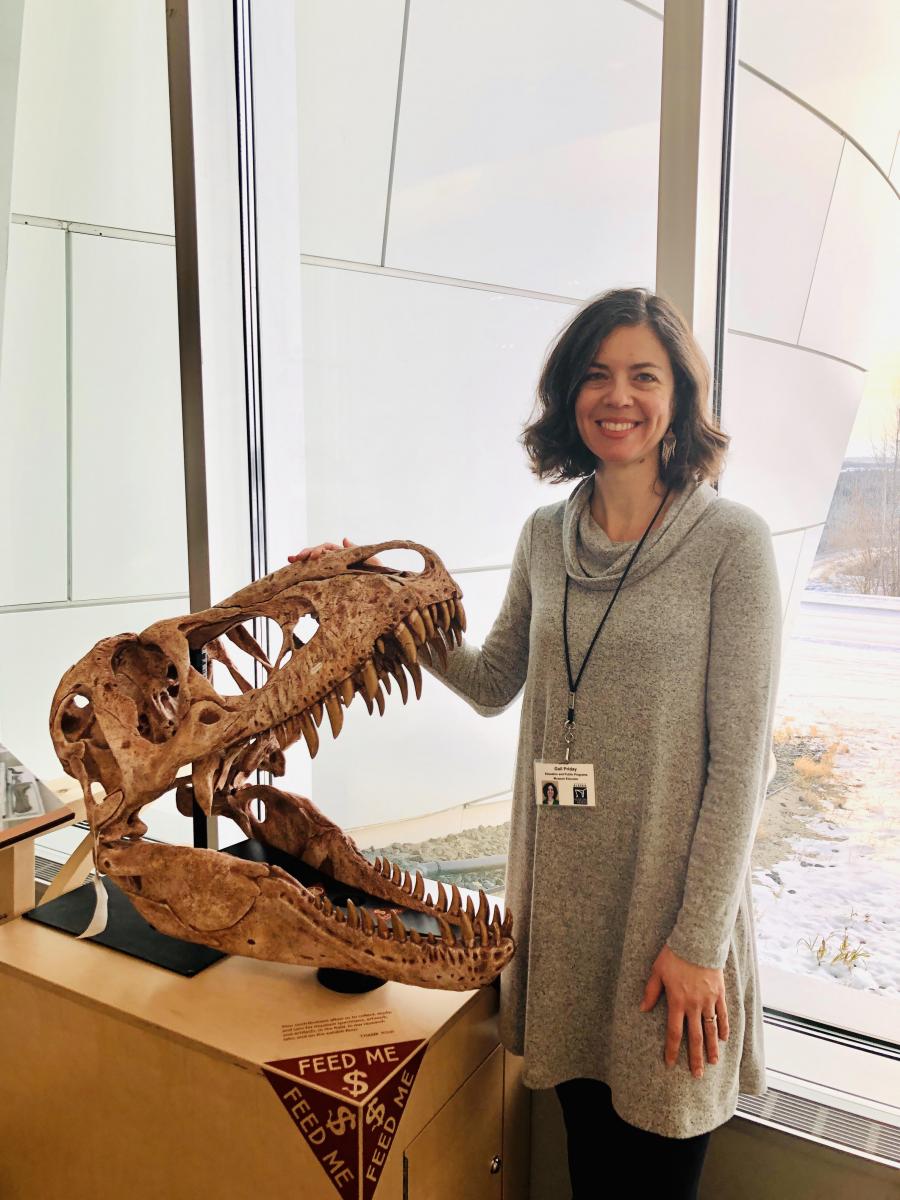By Gail Priday - 2019 Wanda Chin Scholarship Recipient
Three weeks after returning from the annual meeting in Boise, I opened up the notebook I carried with me to the various sessions. As I skimmed the pages I was reminded of just how valuable the long weekend had been. My notes included reflections on accessibility, inclusive language, universal design, listening, and mindfulness. There were practical ideas for sparking curiosity, cross-disciplinary partnering, and even ice breakers I wanted to try with my volunteers. These notes were a goldmine. One page in particular caught my attention. I had written the phrase “everyone is welcome here” numerous times across the clean white paper. I had used my ultra-fine point Sharpie to add swirls, polka dots, and a series of thick, thin, and wavy lines to further emphasize the significance of that grouping of words.
Everyone is welcome here. At the end of a day of connecting, absorbing, and considering how to put new ideas into action, I had doodled those words over and over again. I heard the phrase spoken in one of the sessions I attended, Welcoming Refugees, Immigrants, and New Americans to Museums, and something clicked. As a museum educator, I welcome students, educators, families, volunteers, local visitors, and tourists into my institution every day. It would seem almost obvious to say I want to make sure everyone feels welcome here. While the statement comes from a genuine desire that my institution be a safe, inclusive, welcoming, and non-judgmental space for everyone, it was becoming clear that welcoming needs to be an active practice. It is necessary to assess current practices and continually consider the perspectives and experiences of as wide an audience as possible. This includes making sure no visitors feel excluded, unwelcome, or ignored. It means welcoming and engaging individuals and groups who may come frequently, and those who have never thought to visit a museum. Considering how to actively welcome and engage individuals became the greatest takeaway of the conference for me.
The keynote speaker, Sina Bahram started this train of thought in the opening general session. His memorable talk started a dialog in my mind about what an equitable experience for all visitors means to me and my museum. I attended sessions on preserving indigenous languages, diversity, and the transgender museum experience. These contributed perspectives and tools that helped me realize where my engagement strengths are, and where there is room for improvement. The sessions I attended got me thinking about who my audience is, and who my reach audience might be.
In addition to the broad concepts and practical takeaways, connecting with my peers was a highlight. The fun began as soon as I sat down in the shuttle that brought me and several other attendees from the airport to the hotel. Throughout the weekend I enjoyed hearing about the roles others play in their institutions, and about the exciting work being done in the museum field. I was able to connect with other museum professionals from my state, forming relationships that are sure to flourish. While much time was spent contemplating my role as someone who welcomes and engages others, it should be noted that I felt welcomed and engaged while in the beautiful and vibrant city of Boise. As a first time attendee, I appreciated the many friendly introductions I received from WMA staff, volunteers, presenters, and other attendees.
I am so grateful to have had the opportunity to attend the annual meeting in Boise. While living in Alaska has a number of benefits, the ease and affordability of travel is not one of them. Travel to the lower 48 usually means red-eye flights, long travel hours, and jet lag. The cost of travel alone often makes attending professional development opportunities, such as the WMA Annual Meeting, off limits. The Wanda Chin Scholarship made it possible for me to go to Boise in October. Wanda Chin served as the exhibition and design director at the University of Alaska Museum of the North for 30 years. She retired a few years before I joined the staff. She left a lasting impact on the museum that I am able to witness each day. I am so honored to have received the Wanda Chin Scholarship. Thank you, WMA for the wonderful opportunity.

Gail Priday was a 2019 recipient of WMA’s Wanda Chin Scholarship. She brings a background in the visual arts and art education to the University of Alaska Museum of the North, where she has been the School & Community Liaison for the past five years. She received her Master of Fine Arts from the University of Alaska Fairbanks in 2015 and a Master of Education in Art Education from Towson University in 2002.








Add new comment